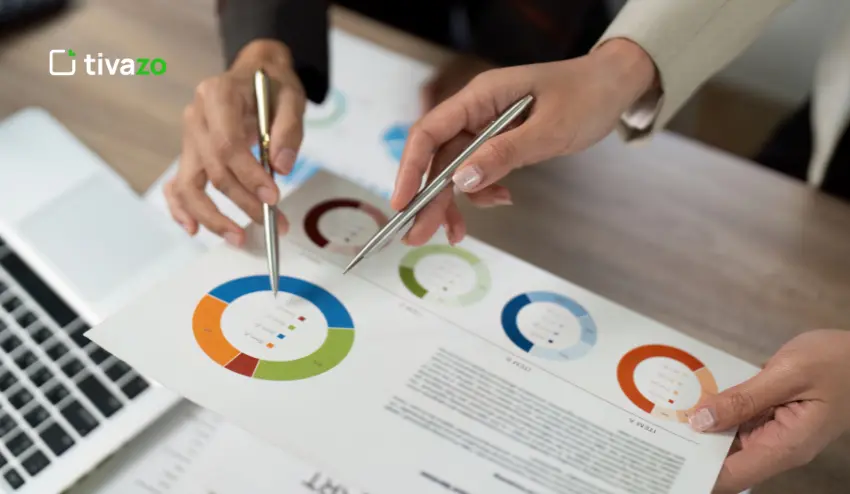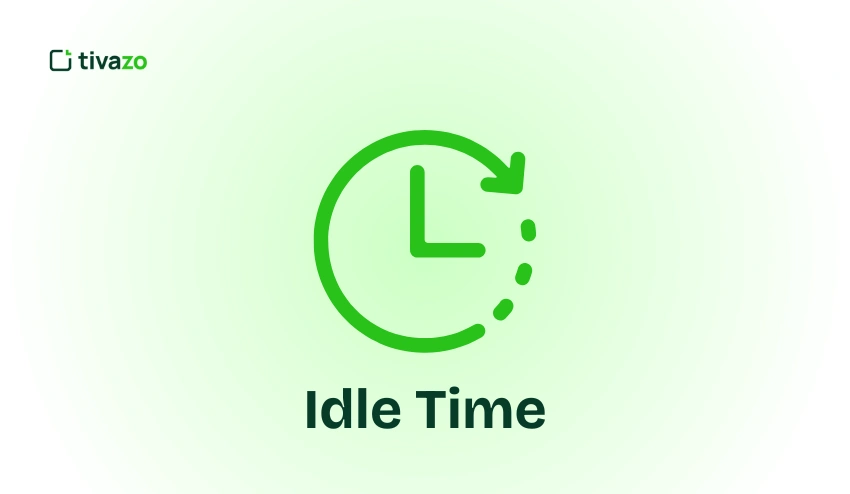This is where your marketing team works 40-hour weeks, comes up with campaigns, works hard but lacks essential information on how your audience is engaging in real time. It is not about effort and hard work, it is that the conventional measures of productivity are hours and work, and not results. In the modern high-pressure, information-overload workplace, teams require more than managing their tasks; they require digital productivity plans that can make sure that time and effort will be converted into meaningful outcomes.
Digital productivity in 2025 does not just involve doing things efficiently. Organizations need to take information as seriously as time and merge media intelligence with time tracking to quantify the actual impact. Media monitoring will give information on the behavior of the audience, engagement trends, and brand perception, and time tracking will be used to make sure that the teams spend energy effectively. The combination of these tools enables organizations to make wiser decisions, react quickly to new trends, and utilize all hours spent.
However, there are no problems with adopting these tools. Excessive use of dashboards, poor metrics interpretation, and data overload may overwhelm teams unless they are handled well. The issue of employee well-being is also critical, since being monitored all the time or not knowing what is expected may result in burnout. This blog covers the ways organizations can effectively use digital productivity strategies, pitfalls to avoid, and a culture of productivity, engagement, and well-being.
The Emergence of Media Intelligence during the Productivity Era.

Media monitoring has developed much more than news reporting or mentioning of brands. Media tracking solutions today offer real-time data on the way audiences interact with content on channels, including social media posts and digital advertisements, as well as video campaigns and news outlets.
Through sophisticated media monitoring tools, companies are able to collect viable information on the brand presence, the mood of the audience, and the trends. This knowledge is priceless to productivity leaders who desire to make sound decisions within a short time. Businesses are able to anticipate crises, manage them proactively, streamline content strategies and coordinate media activity with the overall business objectives, rather than responding to them once they occur.
But the game-changer is when these insights are combined with time tracking systems, where businesses can not only know what is happening, but also how effectively teams are responding to it.
The Strength of Combining Media Intelligence and Time Tracking.
Imagine a situation in which your time tracking dashboard doesn’t only record hours worked, rather it connects productivity to the real-time data of media monitoring. An example might be a marketing reporting on time spent creating a particular campaign, based on the engagement reports generated via the media monitoring service.
There are a few benefits to this merger:

Better Decision Making
With media and productivity data merged, managers will be able to identify what they should spend their time on to get the highest ROI. If the media intelligence shows that a particular campaign is getting more activity, teams can add more time to that approach (and in some cases implement strategies to create more activity).
Enhanced Team Productivity
Time tracking helps identify the obstacles in the workflow, and media monitoring gives context to the external performance. Combined, these produce a full picture- how productivity is transformed to external impact.
Data-Driven Work Prioritization.
Utilizing insights made available via media monitoring, teams are able to focus on initiatives that reflect real-time trends or crisis alerts, ensuring one is always working on what matters most at the time.
Strategic Automation
By utilizing AI-enhanced technologies and as alternatives to Google alerts, organizations will be able to automate monitoring and time tracking, resulting in less manual work in these areas and increased confidence that no important updates are missed.
Real-Time Media Tracking: A Productivity Game-Changer
Traditional productivity tools typically focus internally. However, in 2025, external awareness of digital natives is as important to business success as internal awareness. Media tracking solutions provide real-time status checks on an organization that keeps pace with a digital world.
For example, when an unexpected trend or a viral discussion point emerges on social media, real-time alerts help a business address it immediately-whether that is quickly adjusting messaging, creating a responsive campaign, or reallocating resources to deal with it.
This is responsiveness, and responsiveness is central to modern productivity. It reduces delays in policy or procedures, makes communication relevant, and facilitates agile brands in fast-moving digital ecosystems.
The Future of Google Alerts Alternatives.
Although Google Alerts used to be a reliable tool to keep informed, it is no longer so deep and accurate. The modern media monitoring tools and the alternatives of Google alerts have advanced filtering, real-time analytics, and AI-based sentiment detection, which the traditional tools do not have.
The role of Media Tracking in increasing employee engagement.
Employee engagement and accountability are also enhanced by combining media tracking services with time management software. When team members can perceive the impact that their work has on quantifiable media results, e.g. more brand awareness or favorable attitude, they are more motivated and aligned with company objectives.
Moreover, real-time dashboards with time logs and media metrics provide transparency and the results-oriented culture. Rather than monitoring hours to comply with regulations, organizations start monitoring impact, which is a change that leads to purpose-driven productivity.
Bringing AI and Automation to Digital Productivity Processes.
Purpose:
This part is used to secure the future of your blog. It shows the readers that AI and automation propel digital productivity beyond mere tracking to the level of intelligent optimization, which makes the post timely to future trends in 2025 and beyond.
Explanation:
Time-tracking and media intelligence usually involve human involvement, i.e. the data analysis and interpretation, manual effort adjustments, etc. AI and automation eliminate those inefficiencies by examining the trends, anticipating priorities, and automatically initiating actions.
This part discusses the role of AI in bridging the gap between insight and action in digital productivity processes.
Subtopics explained:
Task Prioritization:
AI dashboards process the data on the performance of the team and recommend the tasks that need to be performed next to ensure the greatest return on investment. As an example, in case a campaign has a great potential of engagement, AI will suggest shifting your time, depending on the trends presented in the dashboard, and towards the trend of making time available to maximize the potential.
Sentiment Analysis (Automated):
Passive constant analysis of online sentiment, through AI tools, can supply information for a report on productivity. The team observes the effect of instantaneous measures, to enhance the brand, or to seize an instant, on the total perception of brands, day in, day out, without anyone engaged in any kind of manual tracking.
Smart Scheduling:
Automation is capable of modifying the timing of the scheduled productivity according to the media information. To take an example, when social media activity is at its highest levels during specific hours or following specific events, your productivity tool can automatically propose an alternative time of doing things, but possibly reach more people, and complete tasks at the same time with efficiency.
Digital Productivity: Measuring What Matters ROI.
Purpose:
This section will make your blog a conceptual one into a measurable one. The question that readers (particularly, managers and decision-makers) would like to find the answer to is how the concept of digital productivity affects ROI, performance, and efficiency. This section provides the answer to that by demonstrating how to quantify productivity using meaningful measures, not the number of hours worked.
Explanation:
The modern digital ecosystem is overwhelmed with data, time logs, engagement statistics, and output reports, which are flooding organizations. Not all this is really productive. This part highlights the fact that true productivity is outcome-oriented rather than action-oriented.
You will feature metrics that directly relate time spent and business results, which will assist leaders in making quality decisions.
Key elements explained:
Engagement-to-Time Ratio:
Measures the extent of audience participation per hour or resource used. Illustration: “An hour of content creation on social media increased engagement by 3%.
Cost-per-Output Hour:
Decides the economic effectiveness of time investment – e.g., how much it would cost to attain a certain degree of content reach or lead conversion.
Media Reaction Speed:
Tracks the speed of responsiveness of a team due to external events or trends revealed by the media monitoring. The faster the reaction, the better it is likely to be in relation to brand positioning and managing crises.
Campaign Modification Speed:
Describes the pace of responsiveness of teams to modify a campaign based on real-time feedback. This is an agility ensuring relevancy and optimization of ROI.
Example:
You can demonstrate a case in which a marketing agency had enhanced ROI by 30 percent, after integrating time tracking data with the media performance data. As an example, the team redistributed resources strategically when the data showed which channels provided the most engagement per hour spent on it, and the results were doubled.
Takeaway:
This part ends with the observation that digital productivity is not measured in terms of input but in terms of impact. It redefines productivity as a growth measure – not a time measure.
The Future of Work: Intelligent Insights and Smart Workflows.

With the further penetration of digital transformation, companies need to adjust to it by integrating various streams of data into unified, intelligent systems. Media intelligence, media monitoring, and time tracking are coming together to create smarter and more agile organizations.
Soon, you will see platforms that combine all these functions together, where productivity dashboards will draw in live media analytics, AI will forecast the results of engagement, and automated notifications will remind teams to take action when it is the right moment.
Conclusion
The future of digital productivity includes not just time management, but also intelligence management. By leveraging media tracking services, real-time media monitoring services, and time tracking platforms, businesses can transform disconnected data into practical insights that spur growth.
Whether you’re a marketing department analyzing the effectiveness of a campaign or a business executive optimizing operations, this convergence will ensure that every second of time and every unit of media is working toward the same goal, maximizing efficiency and improving decisions in a data-driven world.




